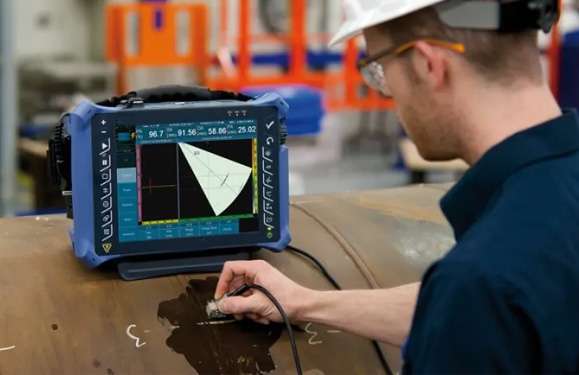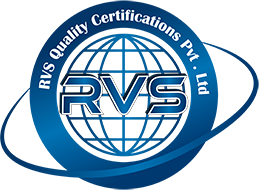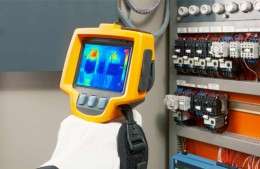I have been out of industrial activity after completing my graduation for about 2 years, then RVS Quality Certifications Pvt Ltd has changed my outlook on my career. Adopting a course in NDT has helped me launch my career.
The Importance of Phased Array Ultrasonic Testing in Quality Assurance
- By: Admin

Phased Array Ultrasonic Testing has proven to be one of the most critical examination tools in ensuring the quality of products in any industry since it focuses on providing the most versatile flaw detection with resolution capabilities in materials and structures. Let's learn why the application of Phased Array Ultrasonic Testing is critical for quality assurance and compare how it differs from other testing methods.
Superior Flaw Detection and Resolution
The main benefit that can be extracted from Phased Array Ultrasonic Testing is the ability to form high-resolution detailed images of internal structures. It differs from conventional ultrasonic testing, where a single transducer is used. Multiple transducers arranged in an array characterize PAUT. That allows for precise steering of ultrasonic beams in different directions and improves crack, void, and inclusion detection significantly.
The greatest advantage of PAUT is its real-time imaging capability to allow quality assurance teams to rapidly detect and correct problems in manufacturing or maintenance. It's most useful in inspecting welds, castings, and other components, making it essential to determine whether products are safe and meet the required standards.
Complementary Technologies
Even though PAUT is brilliant at ultrasonic inspection, it often makes way for a combination of other NDTs like Infrared Thermography. Infrared Thermography Services involves the use of thermal imaging that detects defects based on temperature differences. It is an excellent tool for checking electrical systems, mechanical parts, and building envelopes.
Infrared Thermography will detect overheating electrical circuits, poor insulation, and other heat loss cases in buildings. Combining Infrared Thermography with PAUT produces a more holistic review of the state of a component. For example, PAUT may identify structural defects in a weld, but even this Infrared Thermography will determine the presence of thermal defects whose analysis would not have been possible with ultrasonic testing only.
Better Quality Data Processing and Accuracy
The advantage offered by PAUT is that they enable analysis of very detailed and quantitative data. The software used in PAUT is highly sophisticated, allowing for complex evaluations, such as defect sizing and characterization. This allows for quality assurance through accuracy in assessments for whether a defect meets acceptable limits or needs corrective action.
Furthermore, PAUT produces highly detailed records and report types that are very essential for monitoring the quality of the components over time. Documentation is rendered to meet extremely high standards and ensure that it conforms to industry specifications. With a thorough analysis, PAUT enhances the quality control process and aids in making decisions about maintenance and repair practices.
Training and Skill Development
Proper training is a necessity to fully exploit the capabilities of PAUT. The Eddy Current Training Courses from RVS Quality Certifications Pvt Ltd are an excellent source for anyone looking to improve their skills in nondestructive testing. While Eddy Current Testing differs from the method described in this section, understanding many NDT techniques helps give a broader view of inspection methods and their applications.
Eddy Current Testing is particularly useful when the objective is to detect surface and near-surface defects in conductive materials. Complete training ensures that technicians are well-versed in the strengths and limitations of each NDT method, including PAUT. Cross-training in this sense enables quality assurance teams to make the most appropriate selection of the specific technique they will use for any inspection scenario, making them arrive at more accurate and dependable outcomes.
PAUT is an integral part of today's quality assurance in material inspection, offering unmatched accuracy and detection of finer and more sensitive material flaws. In terms of actual imaging capabilities and full data generation, PAUT remains crucial to the most critical core competency toward maintaining the highest levels of safety and integrity. Supplementary technologies incorporated comprise Thermography Services, supplemented by Training Courses and skill development. Then, through integrating these advanced methods and non-stop training, industries can reach the edge level of rigorous quality control up to superior standards of maintaining performance.
RVS is the absolute best value to learn Aerospace NDT Training Course to nurture my skills. I am completely satisfied with how affordable the service they provide. Thanks RVS Team for constant support.
I would like to thank RVS for their time and patience in helping me learn and grow with my NDT courses. I was able to work and learn at the same time, with no pressure. I would recommend RVS to anyone seeking to work and take courses at the same time. I accomplished the course and today I'm a Certified PCN Level II UT engineer.
RVS helped our new hires to acquire the comprehensive training they need, as well as for refresher courses for our current employees. This has worked well for us in obtaining the necessary NDT certifications.
Just a few lines to express my gratitude for your outstanding service over the past year. We would have no issue in referring to your organisation because of your customer devotion and professionalism.
NDT is employed in a wide range of industries, including oil and gas, aerospace, energy, power, nuclear, and transportation, with nearly endless career opportunities. A job in NDT is extremely dynamic, and ongoing training is required.
One of the advantages of a four-year NDT programme is that students can study in a more focused and instructive manner. For graduates, this offers up a plethora of new NDT employment options, including quality assurance, management, engineering design, research, NDT training, and teaching.
Non-Destructive Testing (NDT) Training Courses - Levels 1, 2 and 3.
The PCN (Personnel Certification in Non-Destructive Testing) is a programme that meets the BS EN ISO 9712 requirements for NDT technicians and supervisors. It is founded in the United Kingdom, but it has an impact on a number of countries in the European Union.








